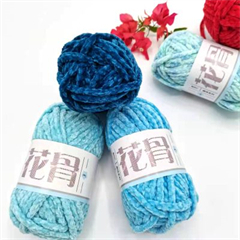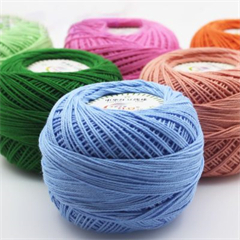Understanding yarn weight is essential for any yarn-related craft, as it determines the thickness and heaviness of the yarn you’ll be working with. Here’s what you need to know to demystify yarn weight:
- Yarn Weight Categories:
- Yarn is categorized into several standardized weight categories, ranging from lace weight (the thinnest) to jumbo weight (the thickest). The most common categories include lace, fingering, sport, worsted, and bulky.
- Yarn Weight Symbol:
- Each yarn weight category is typically represented by a standardized symbol or number. For example, lace weight yarn is often represented as a “0” or “lace” weight, while worsted weight yarn may be symbolized as a “4” or “medium” weight.
- Gauge and Needle/Hook Size:
- Yarn weight is closely associated with the recommended gauge (stitch and row count) and the needle or hook size used to achieve that gauge. Heavier yarns generally require larger needles/hooks, while lighter yarns need smaller ones.
- Yardage per Skein:
- The yardage (or meterage) per skein or ball of yarn can vary significantly based on the weight. Heavier yarns have fewer yards per unit of weight, while lighter yarns have more.
- Projects for Each Weight:
- Different yarn weights are suitable for various types of projects. For example:
- Lace weight is ideal for delicate shawls and lacework.
- Fingering weight is commonly used for socks and lightweight garments.
- Worsted weight is versatile and great for sweaters, scarves, and hats.
- Bulky and super bulky weights are perfect for warm, quick-to-finish projects like blankets and scarves.
- Different yarn weights are suitable for various types of projects. For example:
- Fiber Content:
- Yarn weight doesn’t determine the fiber content, but it’s essential to consider the fiber when choosing yarn for a project. Different fibers can affect the drape, warmth, and care requirements of the finished item.
- Yarn Label Information:
- Always check the yarn label for information about the weight, gauge, recommended needle/hook size, and fiber content. This information helps you choose the right yarn for your project.
- Substituting Yarn Weights:
- It’s possible to substitute one yarn weight for another in many cases, but you’ll need to adjust your pattern and gauge accordingly. Be prepared to make gauge swatches and calculations.
- Mixing Yarn Weights:
- Some creative projects involve mixing yarn weights within the same project to achieve texture and visual interest. Experimenting with yarn weights can lead to unique designs.
- Yarn Weight Conversion:
- If you’re working on a pattern that uses a different weight than your chosen yarn, you can use yarn weight conversion charts or calculators to adapt the pattern to your yarn.
- Personal Preference:
- Ultimately, the choice of yarn weight is a matter of personal preference and project requirements. Some crafters prefer working with finer yarns, while others love the chunkiness of bulkier options.
- Practice and Experience:
- Understanding yarn weight and how it behaves in your projects comes with practice and experience. Don’t be afraid to experiment and learn from your projects.
By becoming familiar with yarn weight categories and their characteristics, you’ll be better equipped to choose the right yarn for your projects and achieve the desired results in your knitting, crocheting, or other yarn crafts.
























